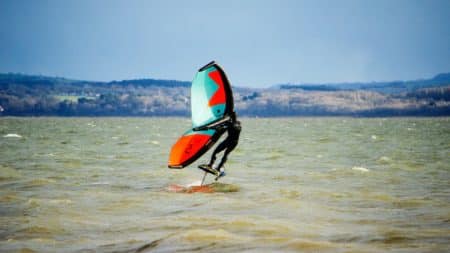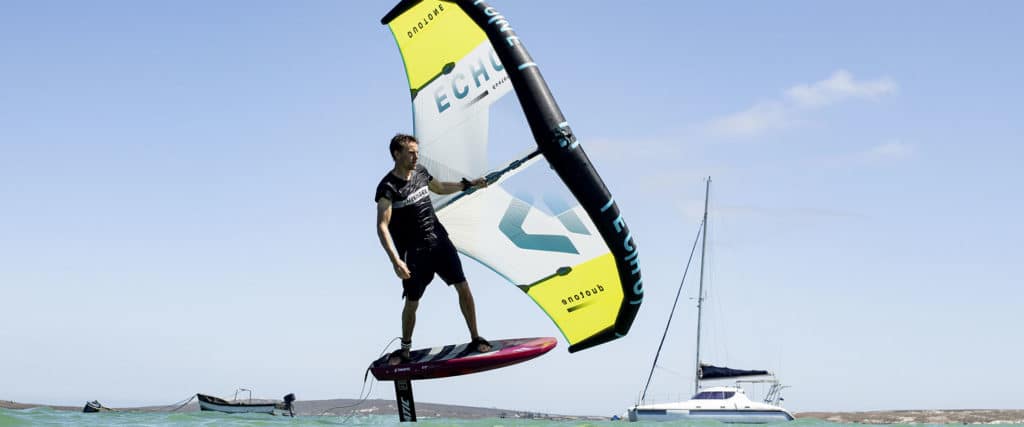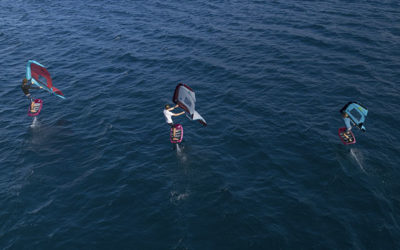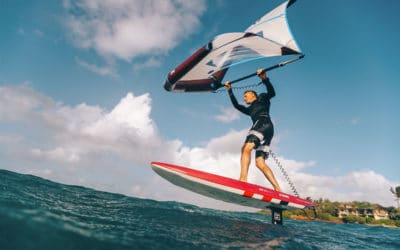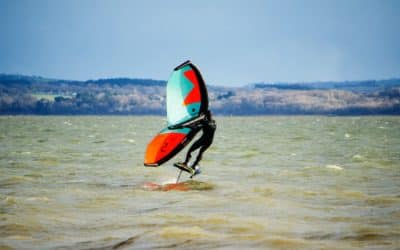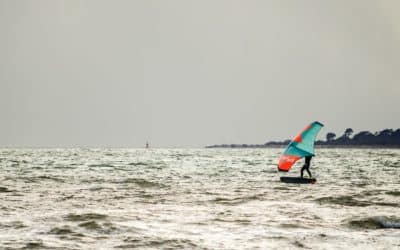How to choose your first wingfoil?
Two things are essential when you want to practice wingfoil: the board and the sail. The equipment is indeed very important and it is essential to choose carefully your first wingfoil to have a good time and practice well. So we’re going to give you the best advice to make the best choice for your future wingfoil.
The wingfoil
Choosing the right equipment is important, no matter what sport you practice. And obviously, wingfoil will require you to make the best choice. Here are some tips on how to make the best choice and avoid making mistakes.
First of all, it is necessary to choose the type of sail according to your preferences. First of all, it will be necessary to think about what you prefer and want.
There are two main types of sails: sails with a rigid handle, the most basic, and sails with a boom. The boom is reminiscent of a kiteboarding wing. The sails are usually equipped with handles. As for sizes and colours, the choice is endless. The best known model is undoubtedly the Slick from Duotone.
What is important in the first instance is to take a close look at the handles. These can be more or less rigid. You should test these handles to see which one fits you best. You can also ask your instructor to do some tests to find out which one you feel comfortable with. Boom models are heavier.
It is also possible to choose a board with a strap (which goes from the wing).
As far as the handles are concerned, it is worth mentioning that the stiffer the handle, the more precise and better the control will be. If you are a beginner, it may therefore be worthwhile to look at rigid handles (like the Unit from Duotone).
It is also worth looking at the strength of the cloth and the sail in general. Some are very light and will not last long. You won’t be able to keep them with you for long. On the other hand, heavier models with reinforcements will be a better investment. It will resist better to shocks, once you practice in the open sea.
Is the shape important?
Now it’s time to focus on the shape. Admittedly, we still have little experience in determining which model is best, as the practice is still very new. We can nevertheless say that a beginner will be more comfortable if he chooses a model with a large window. This will provide more visibility and safety.
The size of the wing
This is a criterion that poses many problems, whether you are a beginner or not in the field of wingfoil.
In simple terms, you should choose the size of your sail according to you, more precisely your weight (we don’t cheat!), but also the wind and your foil. Remember that the bigger the front wing of the foil, the less you will need a big sail. But, you will not be able to sail in strong winds.
If you are not yet sure which wind you are most comfortable with (you are a beginner!), go for a large sail. Being overpowered (a little) will allow you to better control your craft.
To help you, here are the wind ranges and the sail area you will need to sail at your best. For winds between 25 and 35 knots, a sail area of 2 m² will be perfect. Double the sail area for winds between 15 and 25 knots. A 6 m² sail area is ideal for winds below 10 m². For beginners, you can select a more versatile 4 m² sail.
Regarding the relationship between your weight and the sail, here are some things you should know. If you weigh 60 kg (or less), a 3 m² wing will be ideal for you. A 4 m² wing is suitable for people weighing 70 kg. For 80 kg you will need a 5 m² wing and for 90 kg you will need to buy a 6 m² wing.
Note that if you are sailing in the Atlantic, the wind is less strong and you can opt for a larger sail area.
If you don’t want to complicate your life, a 5 or 6 m² sail is perfectly suitable for most people. These are models that can be used almost anywhere. This one is suitable if you practice in moderate winds.
In any case, don’t forget the leash, which is mandatory for beginners.
What about second-hand sails?
At a time when protecting the planet is a major concern for most people, why not turn to a second-hand sail model? This can be very useful if you don’t want to spend too much. This will allow you to get started without breaking your budget and see if wingfoiling is really for you.
Then check the condition of the wing in detail. Don’t overlook anything. If it has been repaired, check if it has been done properly. Also look at the leading edge seams. The “through holes” must be flawless.
If you still have questions, ask your instructor for advice. KGG is also there for that!
Search
Catégories
Recent Posts
Suivez-nous !
